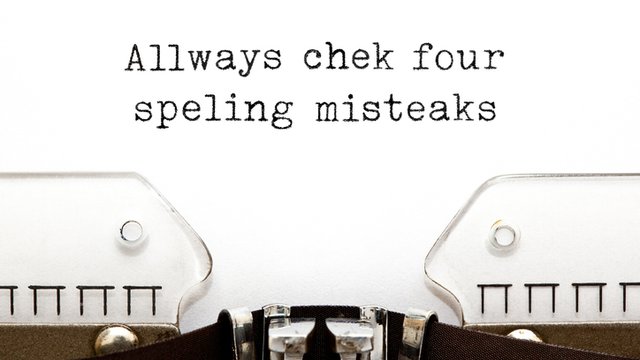In this article by Sean Matthews, president of software provider Visix, he says it’s imperative that you proofread everything before publishing to your digital signs. Anyone who has writing experience can tell you that mistakes creep in, especially typos. (No one out there actually thinks that from and form are interchangeable words, or that teh is an alternate spelling of the). These are honest typos and easily spotted. After all, your digital signage messages shouldn’t be too long (15-20 words max), so proofing them won’t be too much work.
Digital signage is a visual medium, and much of the information you wish to impart can be done with images, icons and videos. These can do a lot of the work, but you’re also going to have to use text, and the words we choose not only decide how effective the communication is, but how trustworthy our messaging is perceived to be. It’s important that your digital signage message text be accurate.
Yes, we’re talking about spelling, punctuation and grammar. And yes, it is important.
Social media is rife with errors, usually because people are writing quickly on a mobile device, and they post their comment without proofing. That’s fine because social media is meant to be conversational and informal. However, as people have gotten more accustomed to seeing these errors, they’ve become more entrenched. After just a few years of online communications, we’re seeing lax grammar and spelling mistakes creep into business communications. That’s not good.
In addition to informing people, we use digital signage to increase engagement, but mistakes on screens undermine a communicator’s authority. And the Hawthorne quote sums up a prevalent attitude – that people who are inaccurate are seen as somewhat untrustworthy.
At best, the organisation looks careless (‘If they don’t care enough to proofread their stuff, why should I care about it?’) Or maybe they’re just incompetent. At worst, credibility is damaged, or there’s a feeling that communicators may be dishonest in some way. None of these are good impressions to make on an audience. They can lead to viewer attrition, and even worse, decreased morale and trust.
Sometimes mistakes happen because the writer thinks one way is the correct way, since that’s what they’ve heard all their life. Just like old wives’ tales, traditional wisdom is not always accurate. This can apply to more than just technical issues. Take the section header above as an example: the actual saying from the 14th century is ‘the proof of the pudding is in the eating’ (‘proof’ meaning test, so this means you cannot know if something has been done correctly until you try it). But, sometime in the 1920s, it started getting used incorrectly and has now become the shortened form, ‘The proof is in the pudding’ (which actually doesn’t make any sense at all, if you think about it).
And then there are actual errors. Sometimes these occur because the person writing the copy isn’t sure about a word or grammar, so they just guess. The solution to that is: don’t guess. Ask someone, or simply Google it and you’ll quickly find guidance.
English is especially prone to problems, since it has lots and lots of homonyms (words with multiple meanings but the same pronunciation – county fair, that isn’t fair), homographs (words with multiple meanings but different pronunciations – tear a piece of paper, a tear in the eye), homophones (words that sound the same but have different spellings and meanings – pear, pair), and other headaches.
You can always toss your text into Microsoft Word or a similar programme, and do a quick spellcheck. That will catch common spelling and grammar mistakes. Online tools like Grammarly can also help you out, though there are no foolproof AI assistants at this time (and they don’t always catch things like ‘form’ for ‘from’, since ‘form’ is also a word). So, you’ll need to be thorough and not just rely on software. The best advice is to have someone who didn’t write the copy proofread it. A fresh eye is always best.
Submit your news and video content to journo@practicalpublishing.co.za
Subscribe to our YouTube channel, read the top 5 stories weekly on WhatsApp or sign up to our newsletter.
This article was sourced from: www.digitalsignagetoday.com















